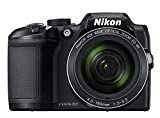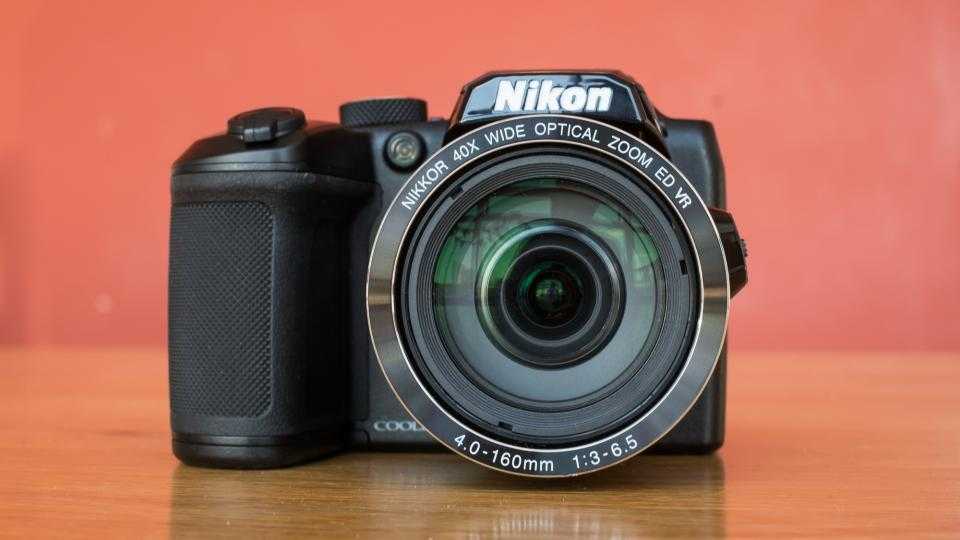Compact cameras are in decline with the rise of smartphones, but there aren’t any smartphones with a 40x zoom. As such, Nikon may be onto something with the budget-friendly B500. It doesn’t bother with enthusiast-friendly features such as a viewfinder, manual exposure or RAW shooting, but at £219, it’s a viable Christmas present or impulse purchase for people who want something more capable than their phone camera.
Features and design
The Nikon won’t always outperform a smartphone, though. With its small sensor and unremarkable lens aperture, it’s not really any better when shooting in low light. The difference is in its ability to zoom from a super-wide-angle 22.5mm (equivalent) focal length to a paparazzi-like 900mm. This 40x zoom range is bettered by certain other bridge cameras but this is still an enormous range by any normal measure.
Nikon has had to make some compromises to bring this camera in at a low price. The lack of a viewfinder is perhaps the most significant — it’s a common feature among bridge cameras but it’s a relatively expensive component. I must admit that I didn’t miss it desperately. It helps that the screen tilts up and down, allowing for comfortable shooting with the elbows braced against the body for stability.


Another cost-saving measure is the use of four AA batteries rather than the usual lithium ion cell. AAs are bulkier and heavier, and a set of branded batteries and a charger will set you back around £20. The upside is that it’s much cheaper to buy an additional set to carry as a backup. Proprietary li-ion batteries for other cameras can cost up to £60. Battery life is excellent, too. It’s quoted at 600 shots but I got over 1,000 from a single charge using Duracell 2,500mAh rechargeables.
The plastic chassis feels reasonably robust, and if the plain black finish is a turn off, the Plum finish might appeal more. The use of four AA batteries means there’s a substantial handgrip, and the camera feels secure and comfortable. There’s a pop-up flash with a decent height to ensure that the lens doesn’t cast a shadow over the scene for wide-angle shots. The lack of an orientation sensor is frustrating, though. Portrait-shaped photos must be rotated manually on a computer.
Controls and performance
There aren’t many buttons and dials, and photographic functions are stripped back to basics. There’s still room for two zoom controls, though — one surrounding the shutter button and another on the lens barrel. The latter is joined by a button that momentarily zooms out to avoid you losing your subject during telephoto shooting. It’s also possible to move the autofocus point to anywhere in the frame. This is an important feature for ultra-zoom cameras where zooming in results in a shallow depth of field, making focus errors more noticeable. Face detection is available too, plus subject tracking and a Target Finding mode that does a decent job of focusing on what it thinks the main subject should be.
Image 2 of 15
Videos are captured at 1080p or 1080i at a choice of 25fps or 30fps frame rates. Autofocus was a little twitchy and noise was prominent in low light. It performed well in brighter conditions, though, with a sharp picture, clear soundtrack and impressively stable handheld footage at the long end of the zoom. The lack of manual control means this isn’t a camera for video enthusiasts but it does a great job of recording family adventures and the occasional bit of wildlife.
Entry-level cameras are rarely the nippiest performers but the B500 is on the right side of acceptable. It took two seconds to switch on and shoot, and 1.7 seconds between subsequent shots. Autofocus was usually responsive but it struggled in low light, particularly at the long end of the zoom. Flash performance is another weak area, taking up to nine seconds between shots. Continuous performance wasn’t too shoddy though, capturing seven frames at 4.1fps and ready to go again after just four seconds. It’s not a dazzling turn of speed but it was enough to give me a few frames to choose from when shooting moving subjects.











